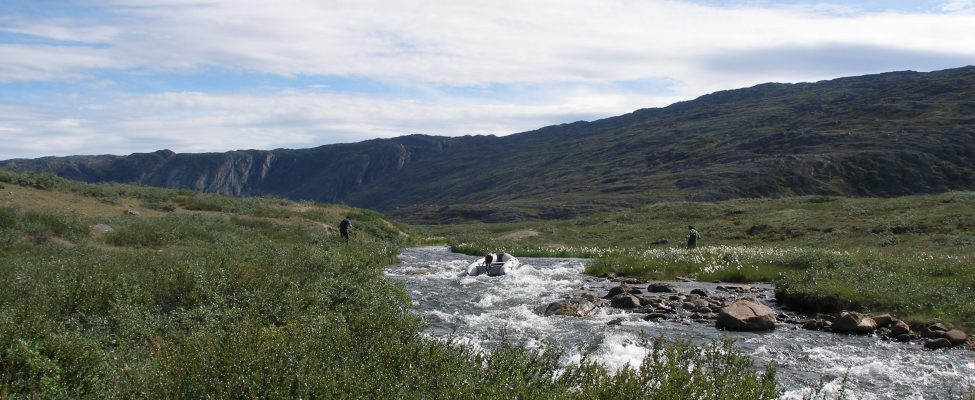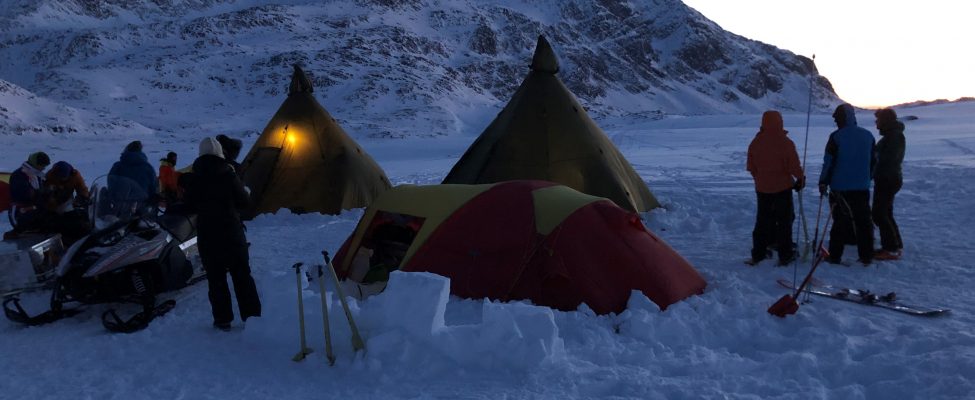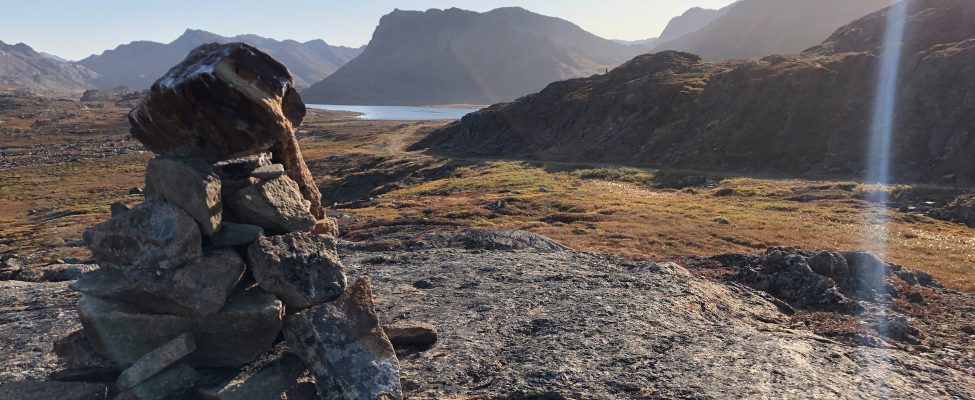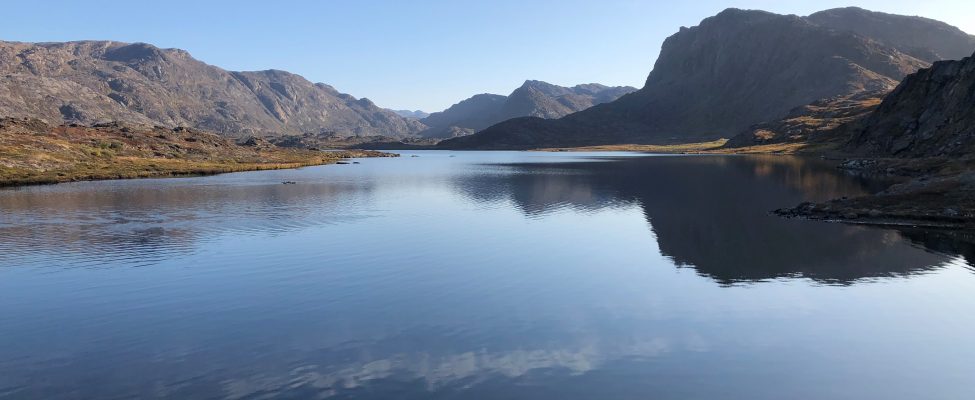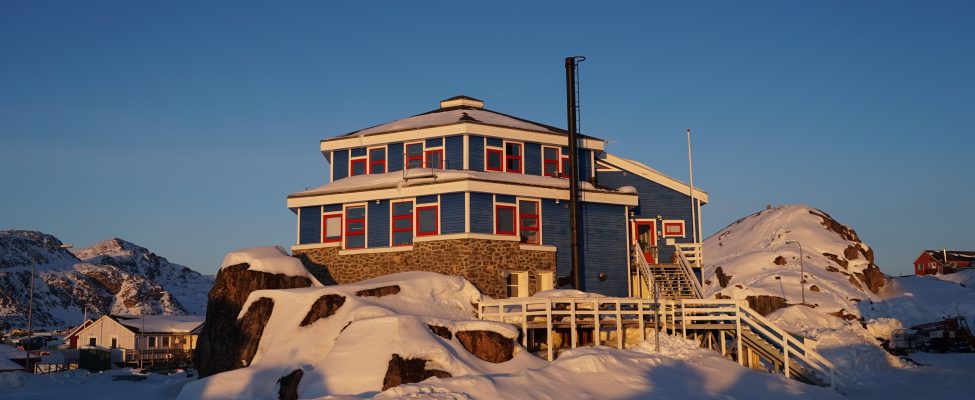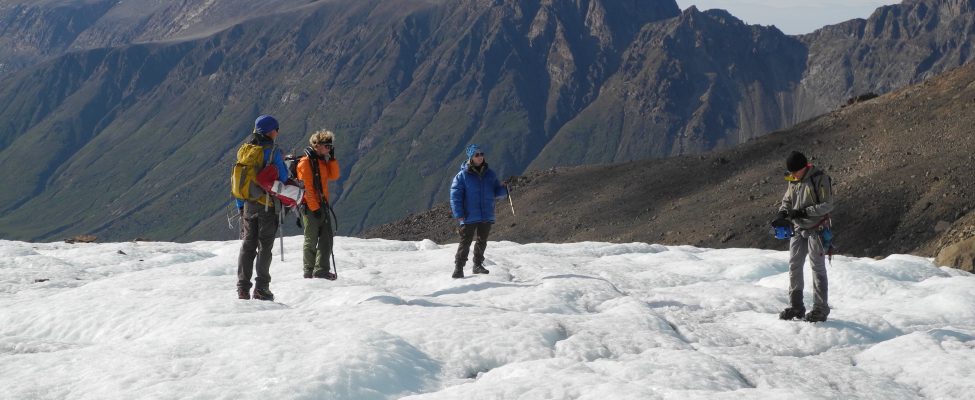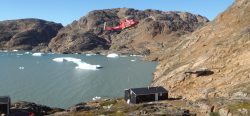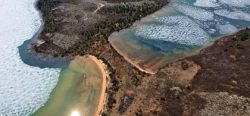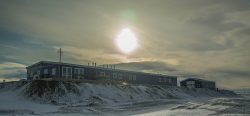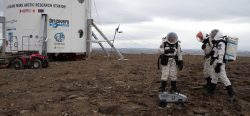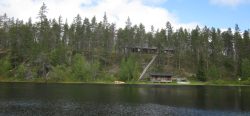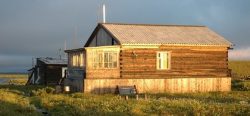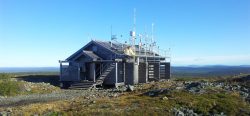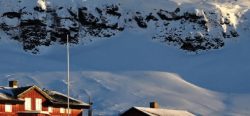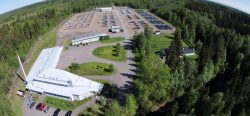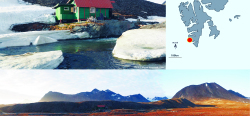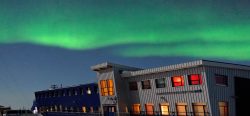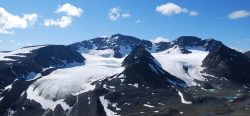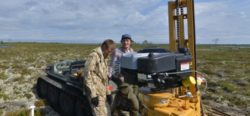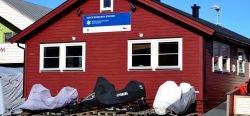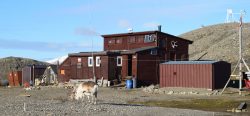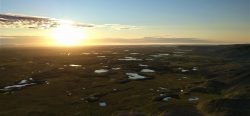STATION NAME AND OWNER
ArcticDefinitions of the Arctic vary according to environmental, geographical, political, cultural and scientific perspectives. Some scientists define the Arctic as areas having a high latitude, long winters, short, cool summers,... More DTU operates and runs the ArcticDefinitions of the Arctic vary according to environmental, geographical, political, cultural and scientific perspectives. Some scientists define the Arctic as areas having a high latitude, long winters, short, cool summers,... More DTU Research Station. The station rests on a cooperation between the Technical University of Denmark (DTU) and the Government of Greenland Namminersorlutik Oqartussat on ArcticDefinitions of the Arctic vary according to environmental, geographical, political, cultural and scientific perspectives. Some scientists define the Arctic as areas having a high latitude, long winters, short, cool summers,... More educations, research and innovation. Buildings are owned by the Government of Greenland and provided by KTI – Tech College Greenland, the technical vocational school of Greenland.
LOCATION
The station is situated in Sisimiut, the second largest town of Greenland with app. 5500 inhabitants. The town is located 75 km north of the Arctic CircleA line of latitude currently at 66° 33? 44? (66.5622°) north of the Equator. It is the southern limit of the region of the Earth that experiences the 'midnight sun'.... More on the central-western coast of Greenland at the east shore of Davis Strait. Sisimiut is the northernmost year-round sea-ice free city in Greenland. The main occupation is fishing industry, trade, public services, tourism and education / research.
BIODIVERSITY AND NATURAL ENVIRONMENT
Sisimiut is situated between sea, mountains, tundraA type of ecosystem in which tree growth is limited by low temperatures. The origin of the word is from from the Kildin Sami word t?ndâr, meaning "uplands" or "treeless mountain tract". In the northern... More and ice. The research station is surrounded to the west by David Strait and to the south by peninsulas and archipelagos. To the north and east of the city vast areas of mountains, lakes and arcticDefinitions of the Arctic vary according to environmental, geographical, political, cultural and scientific perspectives. Some scientists define the Arctic as areas having a high latitude, long winters, short, cool summers,... More tundraA type of ecosystem in which tree growth is limited by low temperatures. The origin of the word is from from the Kildin Sami word t?ndâr, meaning "uplands" or "treeless mountain tract". In the northern... More stretches all the way to Kangerlussuaq (130 km) and further 40 km to the Greenlandic Icecap. The landscape around the station is the largest ice free area in Greenland. Birdlife are breeding in the nearby mountains along the coastline. Reindeer, foxes, musk ox, seals and whale are living near the city. Rarely polar bears are spotted north of town. Sisimiut is the southernmost town in Greenland where sledge dogs are allowed and has ~ 1000 of sledge dogs.
HISTORY AND FACILITIES
The station itself started as a cooperation between Greenlandic Government and DTU on arcticDefinitions of the Arctic vary according to environmental, geographical, political, cultural and scientific perspectives. Some scientists define the Arctic as areas having a high latitude, long winters, short, cool summers,... More technical education in 2000, based on fieldwork and research conducted in the area. Today, around 75 international arcticDefinitions of the Arctic vary according to environmental, geographical, political, cultural and scientific perspectives. Some scientists define the Arctic as areas having a high latitude, long winters, short, cool summers,... More students visit the place over the year. The station is used as a base for international corporation on multidisciplinary arcticDefinitions of the Arctic vary according to environmental, geographical, political, cultural and scientific perspectives. Some scientists define the Arctic as areas having a high latitude, long winters, short, cool summers,... More research and fieldwork fieldwork conducted in the surroundings and backcountry of Sisimiut with several international research teams visiting every year, mostly in summer. The Station is manned year round and a few researcher has chosen to stay throughout the winter as well. We provide logistical support (4WD cars, snowmobile, ATV, equipment and charter of boat), workshops, office facilities and field storage, while laboratory access often can be arranged. We have apartments and rooms with a total of 20 beds while additional rooms can be arranged through our local partners. Moreover we have access to a number of bivouac shelters in the back country and we have a small hut in Kangerlussuaq mainly for monitoring of permafrostPermafrost is frozen ground that remains at or below zero degrees Celsius (32 degrees Fahrenheit) for two or more years. It forms in regions where the mean annual temperature is... More, northern light and glacial earthquakes.
GENERAL RESEARCH AND DATABASES
The research station is situated between sea, tundraA type of ecosystem in which tree growth is limited by low temperatures. The origin of the word is from from the Kildin Sami word t?ndâr, meaning "uplands" or "treeless mountain tract". In the northern... More and ice and is situated ideal for multidisciplinary research and long-term monitoring of geophysical changes related to climate changeAccording to the United Nations Framework Convention on Climate Change, climate change is change in the climate of the whole Earth or a region of the Earth that is believed... More including terrestrial and aquatic ecosystems and Earth Observation (EO). Further, research related to arcticDefinitions of the Arctic vary according to environmental, geographical, political, cultural and scientific perspectives. Some scientists define the Arctic as areas having a high latitude, long winters, short, cool summers,... More settlements, infrastructure and environmental impact is performed, together with research in arcticDefinitions of the Arctic vary according to environmental, geographical, political, cultural and scientific perspectives. Some scientists define the Arctic as areas having a high latitude, long winters, short, cool summers,... More heritage in connection with the area being added to the UNESCO World Heritage list in 2018.
HUMAN DIMENSION
The research station is accessible all year for both researchers and university students.
ACCESS
Sisimiut is reached either by plane or boat. By plane with almost daily connections operated by Air Greenland from either Nuuk, Aasiaat or Kangerlussuaq, the international airport of Greenland. The ArcticDefinitions of the Arctic vary according to environmental, geographical, political, cultural and scientific perspectives. Some scientists define the Arctic as areas having a high latitude, long winters, short, cool summers,... More Trail, a 160 km hike trail, connects Sisimiut with Kangerlussuaq. ArcticDefinitions of the Arctic vary according to environmental, geographical, political, cultural and scientific perspectives. Some scientists define the Arctic as areas having a high latitude, long winters, short, cool summers,... More Umiaq Line operates a coast ferry with one all-year-round weekly connection southbound to Nuuk and Qaqortoq and one weekly connection northbound to Ilulissat during the summer season. In summer, The Arctic CircleA line of latitude currently at 66° 33? 44? (66.5622°) north of the Equator. It is the southern limit of the region of the Earth that experiences the 'midnight sun'.... More Trail, a 160 km hiking trail, also connects Sisimiut and Kangerlussuaq.
TAKE A TOUR AROUND THE STATION
